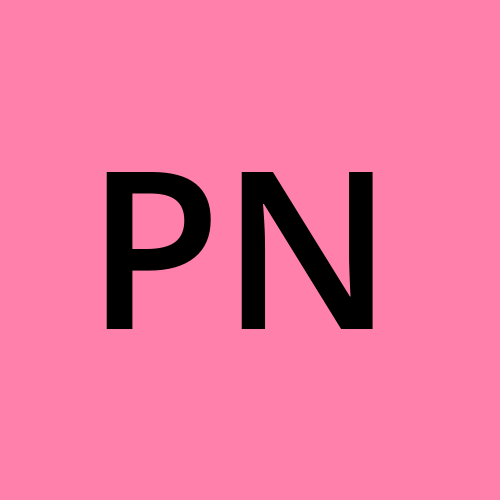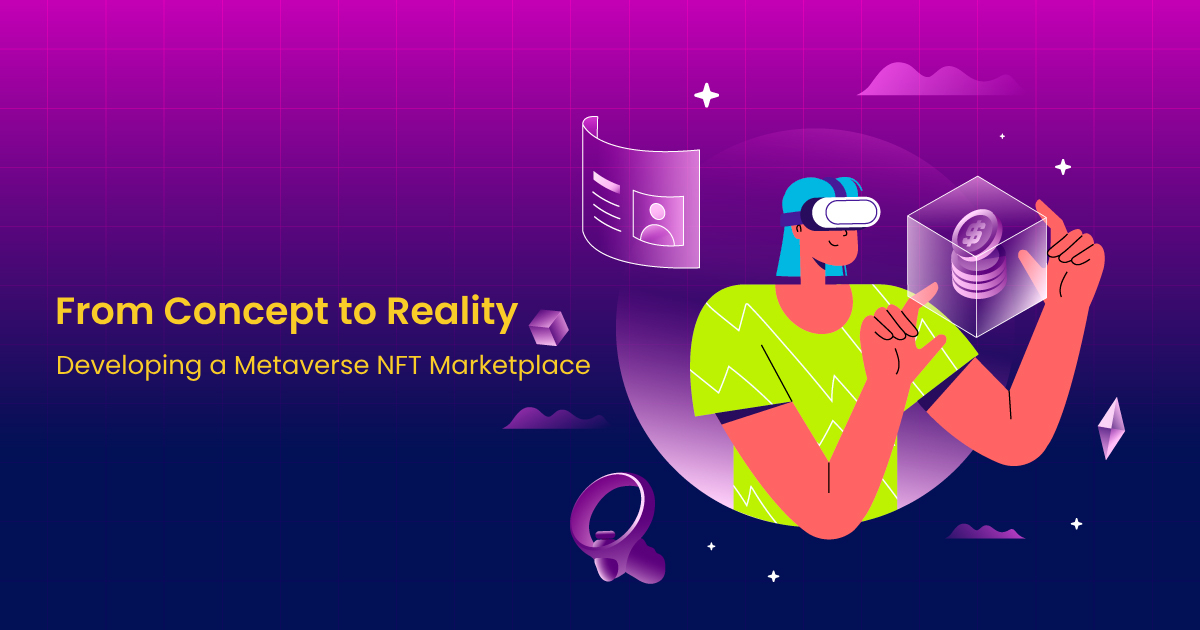From Concept to Reality: Developing a Metaverse NFT Marketplace
 Pooja Negi
Pooja Negi
The idea of the metaverse has recently attracted the interest of investors and IT enthusiasts alike. A metaverse is a virtual universe where people can interact with each other and digital assets in real time. It presents a vast array of possibilities, from immersive gaming experiences to virtual commerce. One integral component of the metaverse is the NFT marketplace, where unique digital assets known as non-fungible tokens (NFTs) can be bought, sold, and traded. In this blog post, we will explore the journey of developing a metaverse NFT marketplace from concept to reality.
1. Defining the Concept:
The first step in developing a metaverse NFT marketplace is to clearly define the concept and objectives. Determine the target audience, the types of NFTs that will be supported, and the functionalities the marketplace will offer. Will it focus on digital art, virtual real estate, or in-game items? Having a clear mission and vision will guide the development process.
2. Technology Stack:
Selecting the right technology stack is crucial for building a robust and scalable metaverse NFT marketplace. Consider using blockchain technology for the underlying infrastructure, as it provides transparency, security, and immutability. Ethereum, Binance Smart Chain, or other blockchain platforms that support NFTs are popular choices. Additionally, you will need front-end development tools, smart contract languages, and backend frameworks to bring your marketplace to life.
3. Smart Contract Development:
Smart contracts are self-executing agreements that run on the blockchain and facilitate the ownership and transfer of NFTs. Develop smart contracts that define the rules and functionality of your marketplace. These contracts will govern the creation, listing, and trading of NFTs. Ensure thorough testing and auditing of the smart contracts to ensure security and eliminate potential vulnerabilities.
4. User Experience Design:
A user-friendly and visually appealing interface is key to attracting and retaining users. Engage experienced UX/UI designers to create an intuitive and immersive experience for your metaverse NFT marketplace. Consider factors such as seamless onboarding, easy navigation, responsive design, and clear instructions for buying, selling, and managing NFTs.
5. Marketplace Features:
Determine the essential features that your metaverse NFT marketplace should offer. These may include the ability to browse and search for NFTs, create and manage collections, set prices and royalties, and conduct auctions or direct sales. Consider incorporating social features such as user profiles, follower systems, and commenting to foster community engagement.
6. Integration with Wallets and Blockchain:
To enable users to interact with the metaverse NFT marketplace, integrate it with popular cryptocurrency wallets. Users can use their NFTs to securely store, manage, and conduct transactions thanks to this. Ensure compatibility with multiple wallets and consider the gas fees associated with transactions on the chosen blockchain.
7. Testing and Security:
Thoroughly test your metaverse NFT marketplace before its launch. Conduct both functional and security testing to identify and fix any bugs or vulnerabilities. Ensure compliance with best practices, such as secure coding standards and data encryption. Implement robust security measures to protect user data, including two-factor authentication and SSL certificates.
8. Launch and Community Building:
Once your metaverse NFT marketplace is ready, it's time to launch it to the public. Create a thorough marketing plan to raise awareness and draw customers.Engage with the NFT community through social media, forums, and partnerships. Actively seek feedback from users and continuously iterate on the platform based on their needs and suggestions.
As a result, creating a metaverse NFT marketplace platform necessitates meticulous planning, technical know-how, and a user-centric strategy. By defining your concept, leveraging the right technology stack, and incorporating essential features, you can bring your vision from concept to
reality. The metaverse NFT marketplace development process combines the emerging concept of the metaverse with the innovative world of non-fungible tokens. By creating a platform where users can buy, sell, and trade NFTs within the metaverse, you are tapping into the potential of both technologies.
Throughout the development journey, you'll need to consider various metaverse development aspects. This includes defining the concept of your marketplace within the metaverse, selecting the appropriate technology stack to support metaverse interactions, and integrating with blockchain for NFT transactions. The development process should also prioritize user experience design, ensuring that users can seamlessly navigate the metaverse NFT marketplace and interact with digital assets.
By combining these elements effectively, your metaverse NFT marketplace can serve as a gateway to a thriving virtual economy, where users can explore, engage, and transact within the metaverse. So, dive into the metaverse NFT marketplace development process and unlock the potential of this exciting digital frontier.
Subscribe to my newsletter
Read articles from Pooja Negi directly inside your inbox. Subscribe to the newsletter, and don't miss out.
Written by
